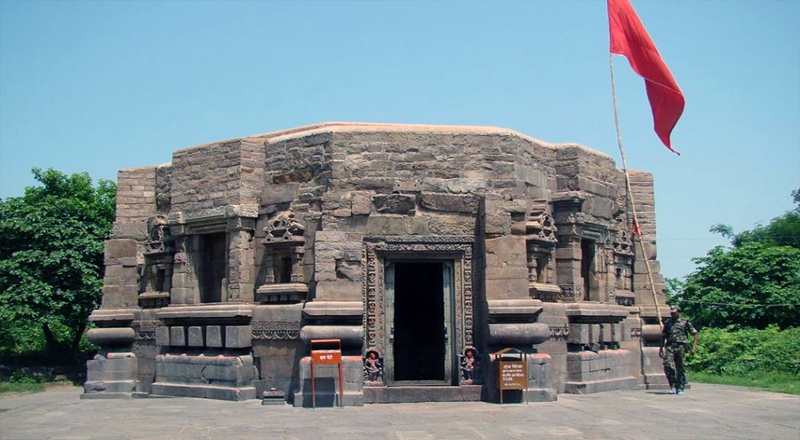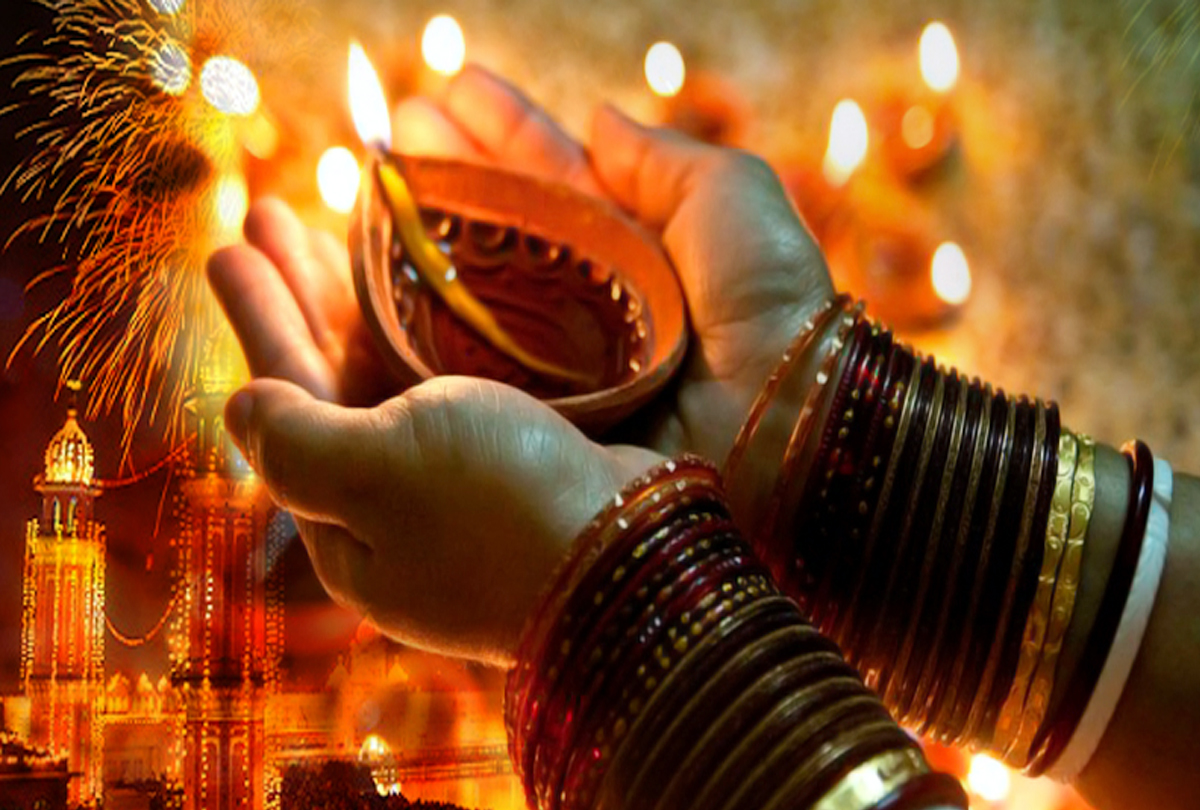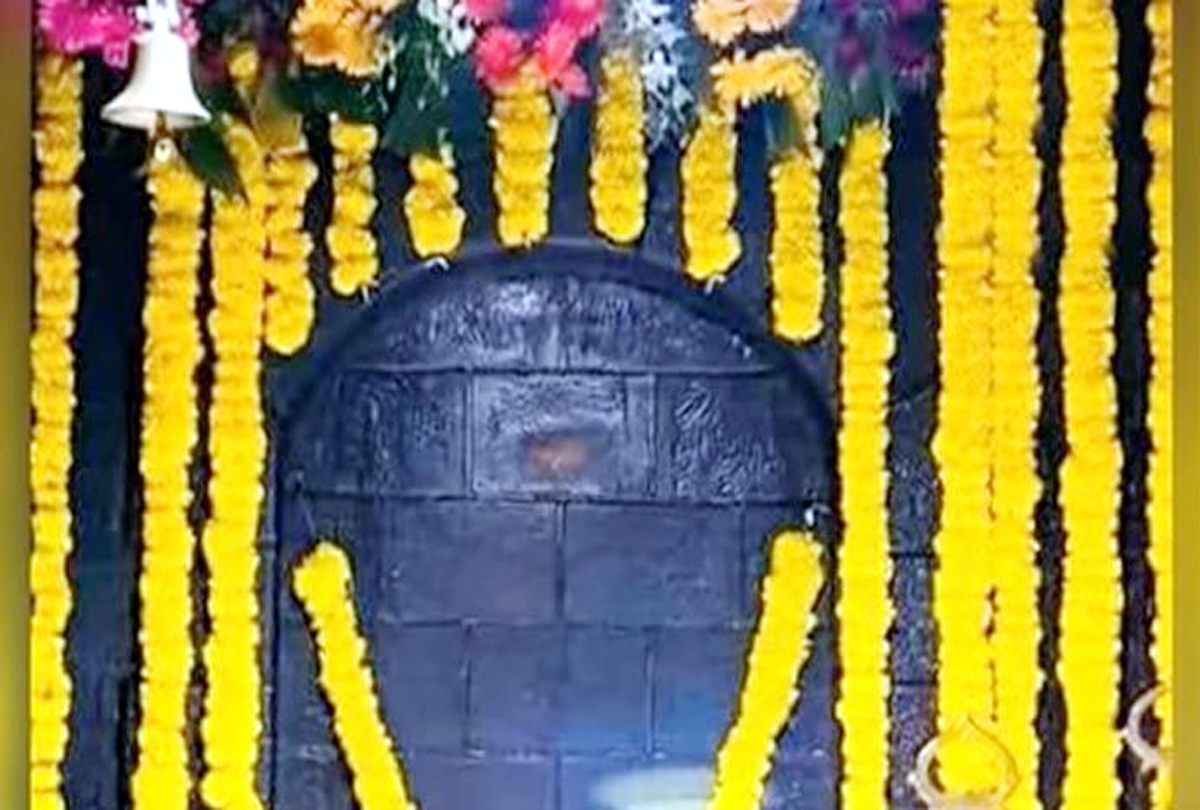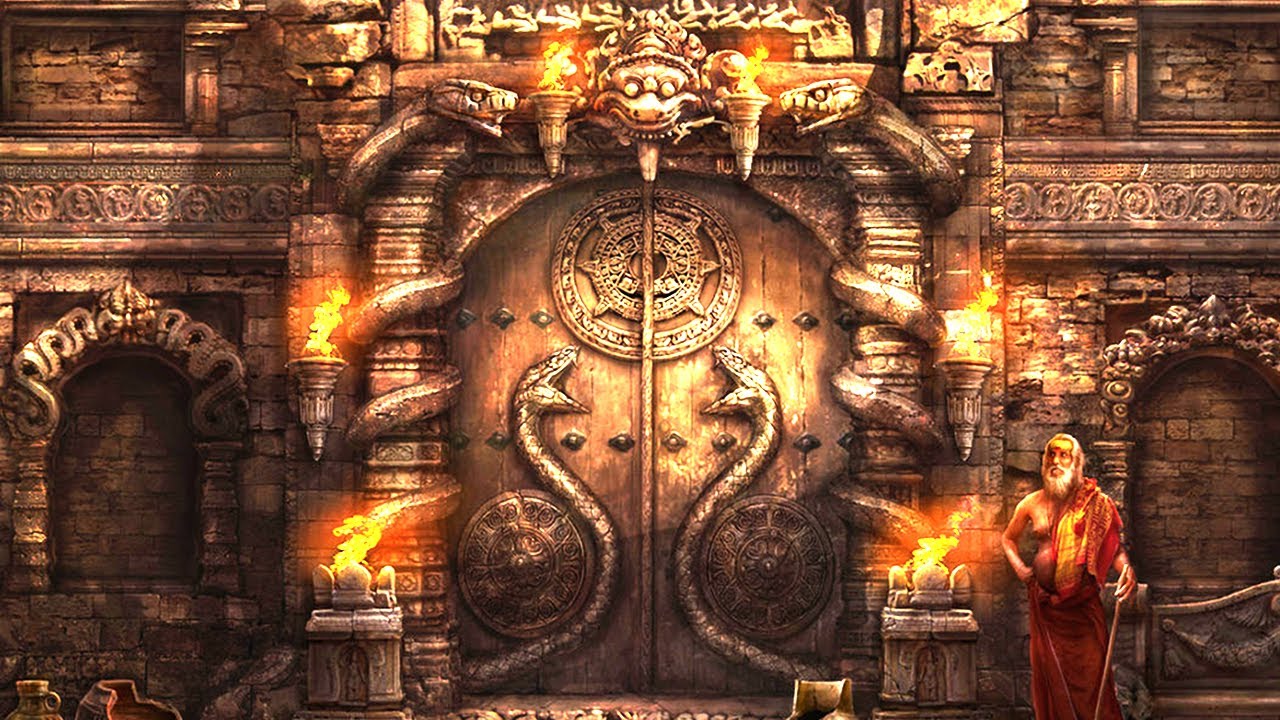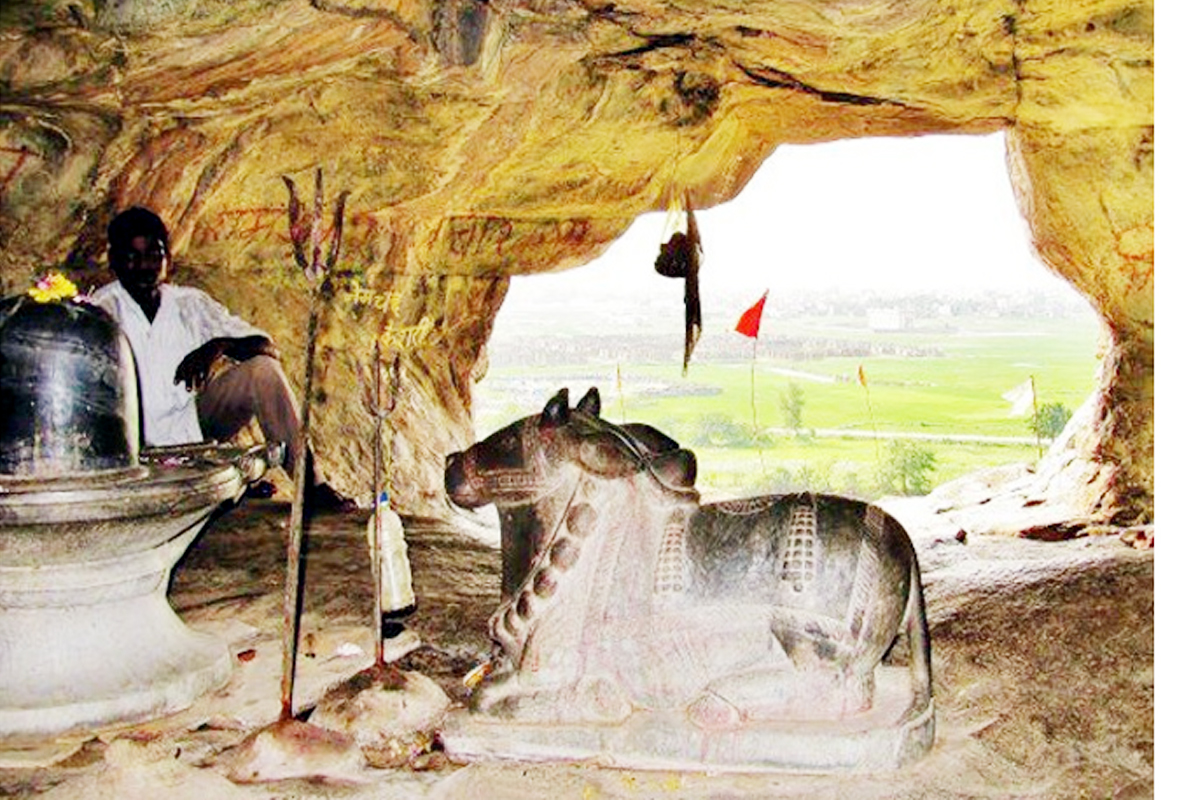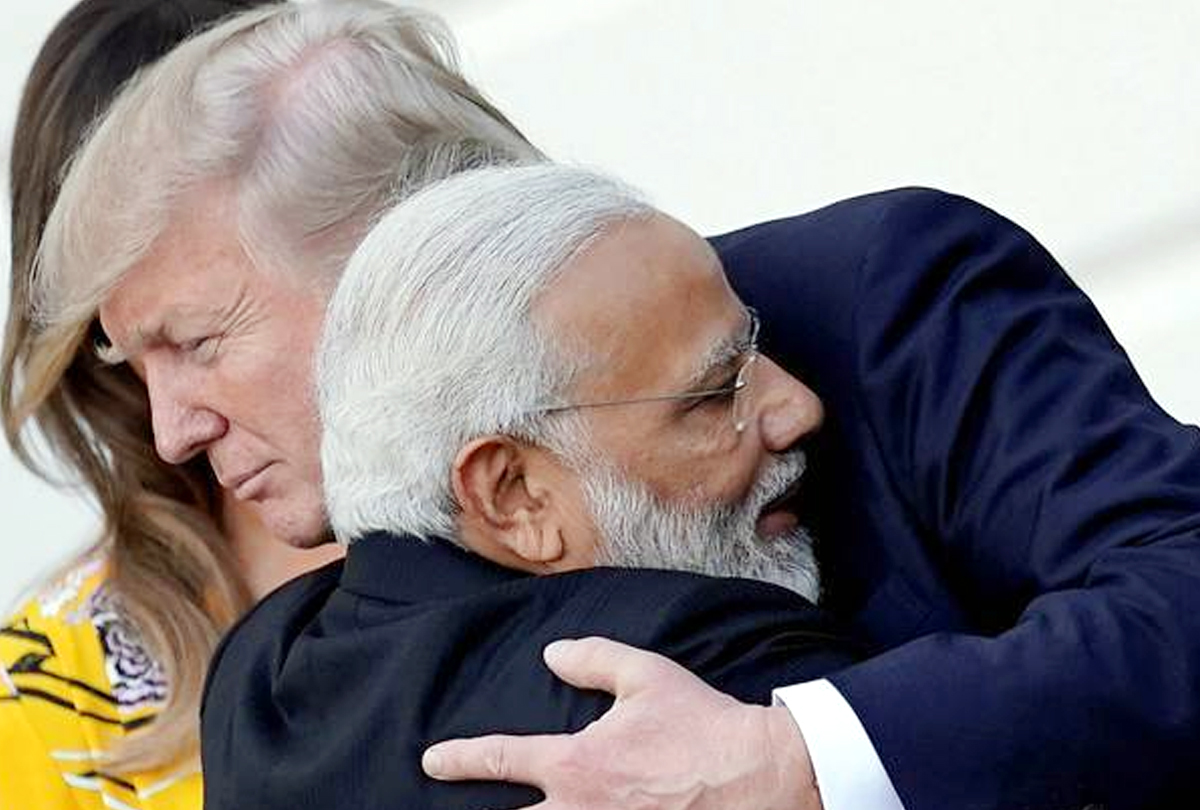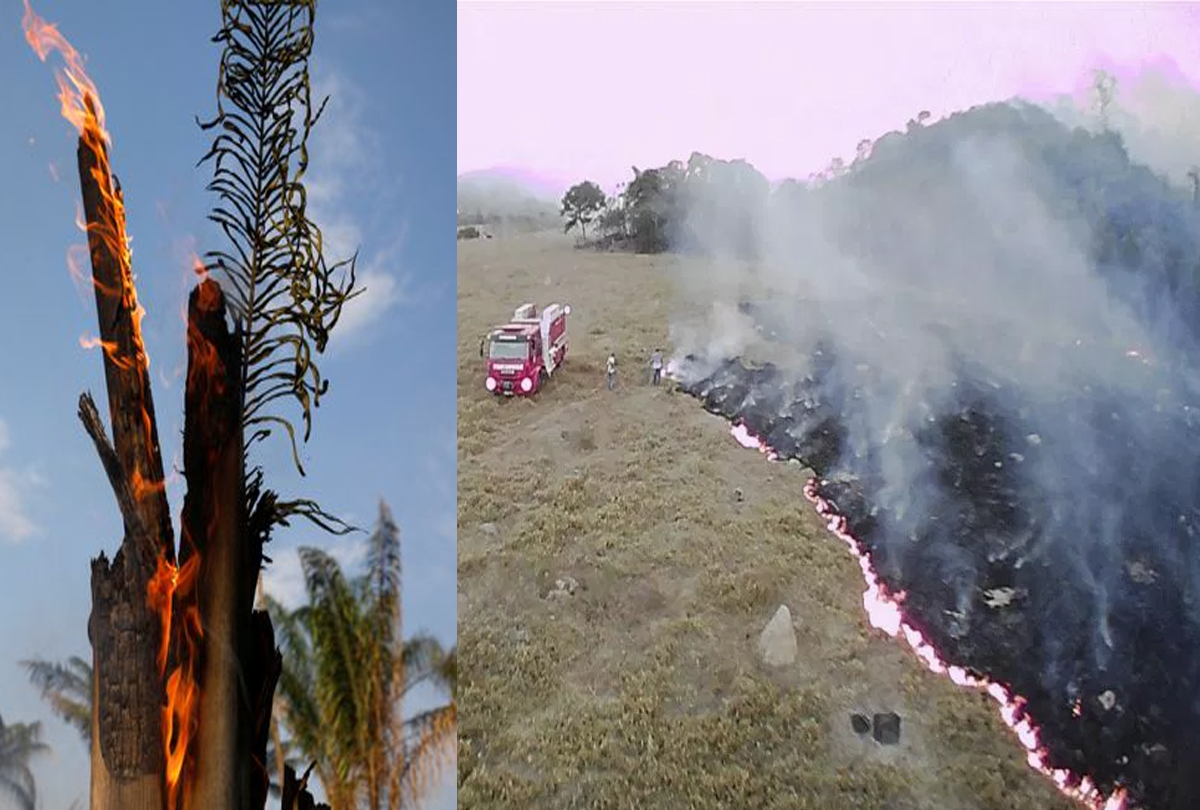This temple of Shiva has more power than Chardham.

[Edited By: News Plus]
Sunday, 21st July , 2019 10:39 pmPatal Bhuvaneshwar is a limestone cave temple in the village of Bhubneshwar in the Pithoragarh district of Uttarakhand. The cave has a length of 160 m and a depth of 90 feet. Essentially a dwelling place of Shiva, it is believed that this place rests 33 Koti gods and some people say that a cult here is more special than Chardham.
It is not often that your heart skips a beat when looking at the entrance of an ancient temple. Except when it is cut naturally with the shape of a cave and you need to get to the temple, following steep, slippery and narrow steps naturally formed stairs. The steps to the final destination (the temple of Shiva) are few but so steep that iron chains have been joined to push down and add to it, the limestone cave looming on both sides; Our conjecture is that it will make you feel almost impulsively claustrophobic. So take the sacred step at your own risk and feel comfortable while doing this 5 minute walk type excursion. As we always believe, you possess a miraculous power when you are in a sacred place and it is really your mental power that overcomes your physical strength at that moment. Many people were seen coming down from the cave, especially elderly people, who seemed more nimble mentally than their body structure.

Then, once you cross this small fleet there are few long and steep steps, you get to a small place like the sky. The temple is legendary and seems to be like that, also because of your small achievement at this time.
What you will witness in Patal Bhuvaneshwar
The temple of Shiva looks like a mini Kedarnath and Badrinath at first sight. People say that the cave temple is legendary, as it marks the presence of Lord Shiva, apart from his heavenly presence. It was the first time that Shiva left Mount Kailash to descend and reach earthly terrain and took rest here in Uttrakahad. It is also believed that there are 33 Koti gods. The temple was discovered by King Rituparna in the Sund dynasty of Treta Yug. However, you can not experience the supreme deity that has the place, since most of its inhabitants are now closed and, therefore, the full potential of the temple has not yet been explored.

In addition to this, the cave has a secret underground route that connects with the four abodes(Char Dham). And the dollar does not stop here. The legend says that the cave has an underground route that connects with Mount Kailash, which was established by the Pandavas when they meditated on the grounds of the cave in front of Lord Shiva. After arriving at the underground site, you will witness a splendid view of the stone formations of Sheshnag and Jatas of Lord Shiva in different points of the cave. When you walk on the floor of the cave, the snake body impression on it will leave you amazed. There is a rock form of Kali Bhairav's language and Indra's Aravati .
There are four entrances inside the cave called "Randwar", "Paapdwar", "Dharamdwar" and "Mokshadwar". The Paapdwar is closed (after the death of Ravana) and so is Randwar (after the Mahabharata war).
Another legendary story is that Lord Shiva cut off Ganesh's head from his son in anger and later, at the urging of his wife, he gave Ganesh an elephant-like head, which we know today. Some local people in this small hill station in the Kumaon region of Uttarakhand believe that Lord Shiva established the head of Ganesh on this site.
Even though what we see today is a simple view of a Shivlinga in its place or a representation of Ganesh's separation head, the literature on the temple says that Shiva established a Lotus of 108 stems at the top of the memorial of Ganesha and that, this Lotus Drops of water continually on the forehead of Ganesha. Visitors can experience this wonderful live view inside the cave. People believe that this Brahma Lotus was established by Lord Shiva himself and until today, you can witness this incredible site of drops that fall naturally on the head of Ganesha in the same place.
Even though what we see today is a simple view of a Shivlinga in its place or a representation of Ganesh's separation head, the literature on the temple says that Shiva established a Lotus of 108 stems at the top of the memorial of Ganesha and that, this Lotus Drops of water continually on the forehead of Ganesha. Visitors can experience this wonderful live view inside the cave. People believe that this Brahma Lotus was established by Lord Shiva himself and until today, he can witness this incredible site of drops that fall naturally on Ganesha's head in the same place.

Latest News
-
2-Doxy-D is a game-changer drug - discovered by sc
-
UP Covid News: Recovery rate rises 86 percent in U
-
Big B orders 50 oxygen concentrators from Poland,
-
Today is Akshay tritiya-PM Modi and Akhilesh yadav
-
Kanpur health department doing preparations to fig
-
UP Govt. must be held accountable for "failing" it
-
16 doctors in Unnao UP resign yesterday but retrac
-
Vaccine is safety cycle against corona pandemic-CM
-
Life of every person is priceless,rescue is the be
-
Kanpur Municipal Corporation will make dust free K
-
Corona vaccination: UP government withdraws the de
-
UP Government should follow the orders of Highcour
-
Uttar Pradesh-IG roaming in the city without the u
-
PM, take off those pink goggles, by which nothing
-
Rahul Gandhi's counterattack on BJP Government’s s
-
Happy international nurse day-PM Modi, Rahul Gandh
-
Online food delivery and liquor shops can open the
-
Egoistic BJP should work in public interest instea
-
High court directed UP Government to make a Covid
-
Isolation rooms to be built in industrial units, a
-
WHO has appreciated the effort of the Yogi Adityan
-
Brother is forced to carry his corona afflicted br
-
Lucknow- Free auto service for covid patients
-
Lucknow-Defense Minister and CM Yogi inaugurated
-
Wine shops opened in kanpur
-
Kanpur: oxygen demand 50 percent decrease as infec
-
Kanpur Crime Branch Police arrested 2 accused of i
-
Kanpur police's initiative to prevent corona infec
-
CM Yogi inspected the community health center in c
-
Corona's third wave: IIT professor claims not to c
World News
-
American president Appoints Two More Indian To Key
-
Arora Akanksha an Indian running for United Nation
-
Brazil thankes india with hanuman after receiving
-
Toronto protest against Indian citizenship law as
-
One-Of-A-Kind Wedding: After Groom's Father Gets A
-
Kim's Horse Ride On Sacred Mountain Hints At "Grea
-
Chinese President’s India visit on track, confirms
-
'Howdy Modi' event 'win-win' situation for Modi an
-
Malala urges U.N. to help Kashmiri children go bac
-
Rocket blast at U.S. Embassy in Kabul on 9/11 anni
-
PM Modi launches $4.2 mn redevelopment project of
-
Pakistan Blacklisted by FATF's: After Failing to A
-
Amazon Rainforest burning: Brazil President tells
-
10 shoking pics of Amazon Rainforest Burning
-
200 pakistan twitter accounts suspended on kashmir
-
Trump dials Imran Khan, asks to ‘moderate rhetoric
-
No policy change on Kashmir, says U.S.
-
Hamza, the son of Osama bin Laden, is dead
-
Ethiopians planted more than 200 million trees in
-
Pakistani military aircraft crash: All 5 crew memb




